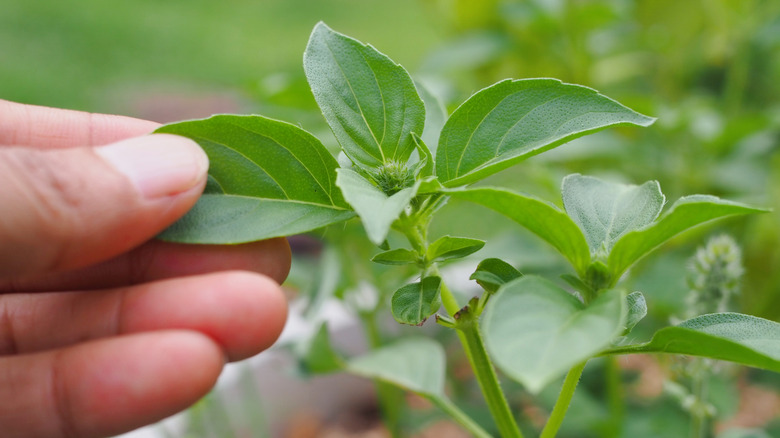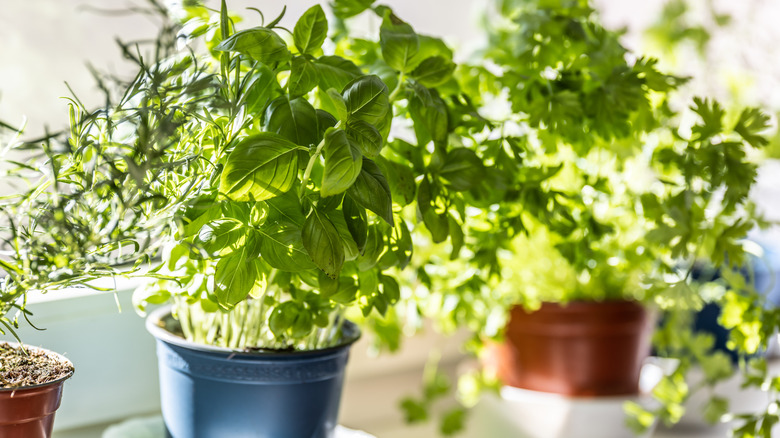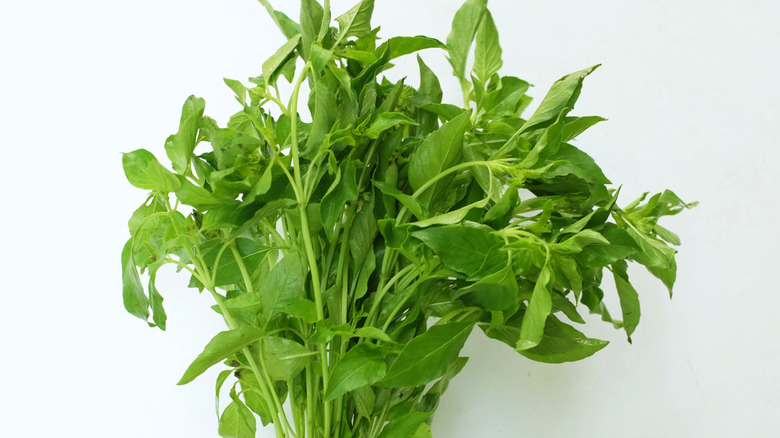Prevent Basil Plants From Dying So Fast With This DIY Solution
Once you finished lamenting over the ever-increasing price of avocados at your local grocery store, you might have seen an array of basil plants (Ocimum basilicum), strategically placed by the tomatoes in the produce section. This fresh flavor combo incites dreams of fresh pasta and homemade margarita pizza, which may have inspired you to pick one up and take it home. Then, disappointment returned when that once-promising basil plant withered and died within a few weeks. This quick death is at odds with the relatively low-maintenance basil plant, which is often suggested as a great beginner herb. The unfortunate truth is that there wasn't much you could do to salvage it – and the grocery store is to blame.
Supermarket basil plants are essentially designed for short-term use (more on that in a moment), but cultivating basil is not a hopeless task. As one of the herbs that will grow best in your kitchen, basil is easy to keep alive for a long time if you follow the correct procedures when you first bring it home.
There is a lot going on in that potted basil plant
Looking at the basil you just impulse-purchased from the grocery store, you might think it's a single plant, but the plastic container holds a secret. The basil "plant" is actually a cluster of up to 20 or 30 basil seedlings. These seedlings are stuffed into the plastic container, giving the illusion of a healthier, fluffier plant, since a single seedling looks a bit spindly and sad until it establishes itself.
Before these seedlings fight to the death for sunlight and nutrients, you can save your basil. Start by giving all of the seedlings room to breathe. Take the tangled mess out of its suffocating pot and gently separate the seedlings. To avoid making a mess, do this before watering the plant, but if you're having trouble getting all the seedlings apart, you can wet the dirt. If all you've known is wilted grocery store basil, it might seem impossible to care for, but once the individual plants are separated, growing and taking care of basil plants is very approachable.
How to cultivate basil plants at home
Once you've untangled your basil seedlings, you're left with quite a few baby basil plants that need to be planted. You can grow basil on your kitchen counter or outdoors in USDA Hardiness Zones 3 to 11 (zones will vary depending on the type of basil). Regardless of where you plant your basil, make sure it gets a lot of sunlight. Basil does best in warmer climates, but it can be a summer perennial in colder climates. If you plant basil out of season, keep it indoors for six to eight weeks to grow a thicker, stronger stem.
Plant each seedling in a separate pot with a drainage hole. Terra cotta pots are a good choice, as the absorbent clay keeps the plants from getting too dry or too wet. Basil prefers slightly acidic soil with a pH of 6.0 to 7.5. You might be wondering how often you should water basil plants, and the answer is: it depends. Concentrate more on maintaining a moist, well-drained soil rather than adhering to a strict watering schedule. Keeping basil plants alive should be much easier once they're separated. You might even be able to cultivate all 20 to 30 of them.


